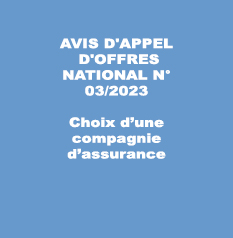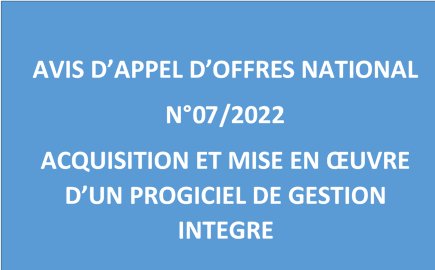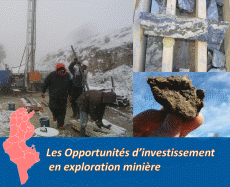| Programme annuel & rapport de suivi technique |
-

Rapport d'activités 2023
-

Programmes Techniques 2024
|
| Géocatalogue |

|
| Appels d'Offres |
-

ACQUISITION DES TICKETS RESTAURANT POUR LE PERSONNEL DE L’ONM
-

CHOIX D’UNE COMPAGNIE D’ASSURANCE
-

ACQUISITION ET MISE EN ŒUVRE D’UN PROGICIEL DE GESTION INTEGRE
|
|
Investir en Tunisie |


|
|
|
|
|
::
Documentation and Editions
>>
Research library
|
| |
|
[
Search by author
]
[
Search keyword
]
[
Search by index
]
[
Search by category
]
|
title of the reference :
|
Flow exchange between the deep and shallow groundwaters in the Sbeitla synclinal basin (Tunisia)
|
|
Publication Date:
|
2005
|
|
Author :
|
Dassi Lassaad, Zouari Kamel, Seiler Klaus Peter
|
|
Catalogue type :
|
Livre
|
|
Catalogue reference :
|
Vol.47 Environmental Geology Vol.47 Flow exchange between the deep and shallow groundwaters in the Sbeitla synclinal basin (Tunisia) an isotopic approach. "Stable and radiogenic isotopes of water have been used to constrain the source, origin, age, migration pathway and mixing processes in the Sbeitla (Tunisia) system. The system is composed of an upper unconfined ""Middle Miocene"" aquifer with a variable thickness from 10-300 m, an intermediate confined/unconfined ""Lower Miocene"" aquifer about 100 m thick and a deeper confined ""Lower Cretaceous"" aquifer about 150 m thick separated by a thin clay layer. A total of 53 groundwater samples from the three aquifers and spring samples were collected during Februray and March 2000 and isotopically analysed using conventinal methods. The stable isotopes composition of waters establishes that the deep groundwater (depleted as compared to present corresponding local rainfall) is ancient water recharged probably during the Late Pleistocene and the early Holocene periods. The relatively recent water in the superficial aquifer is composed of mixed waters resulting presumably from upward leakage from the deeper groundwater. The radiogenic isotopes data confirm that the recent water, with a tritium content between 6,5 and 19 TU, represents post-nuclear recharge and the ancient groundwater with low carbon-14 contents between 7 and 26 pmC infiltrated betwen 8000 to 20000 years ago. When used in conjunction with the stable isotopes data, the mixing process can be clearly identified, especially in the Sbeitla sill area. Groundwater of the upper aquifer exhibits isotopic signatures of both the old and recent waters. By using isotopic mass balance, the computed contribution of the deep groundwater in recharging the upper aquifer is up to 94%." réfer. bibliogr. isotope ; carbonate ; radioactivité ; nappe ; eau souterraine ; Miocène ; Crétacé ; Tunisie ; Tunisie Centrale ; Sbeitla Zouari Kamel Seiler Klaus Peter Dassi Lassaad Géochimie
|
|
Indexation decimale :
|
Géochimie
|
|
Keywords :
|
isotope ; carbonate ; radioactivité ; nappe ; eau souterraine ; Miocène ; Crétacé ; Tunisie ; Tunisie Centrale ; Sbeitla
|
|
Summary :
|
"Stable and radiogenic isotopes of water have been used to constrain the source, origin, age, migration pathway and mixing processes in the Sbeitla (Tunisia) system. The system is composed of an upper unconfined ""Middle Miocene"" aquifer with a variable thickness from 10-300 m, an intermediate confined/unconfined ""Lower Miocene"" aquifer about 100 m thick and a deeper confined ""Lower Cretaceous"" aquifer about 150 m thick separated by a thin clay layer. A total of 53 groundwater samples from the three aquifers and spring samples were collected during Februray and March 2000 and isotopically analysed using conventinal methods. The stable isotopes composition of waters establishes that the deep groundwater (depleted as compared to present corresponding local rainfall) is ancient water recharged probably during the Late Pleistocene and the early Holocene periods. The relatively recent water in the superficial aquifer is composed of mixed waters resulting presumably from upward leakage from the deeper groundwater. The radiogenic isotopes data confirm that the recent water, with a tritium content between 6,5 and 19 TU, represents post-nuclear recharge and the ancient groundwater with low carbon-14 contents between 7 and 26 pmC infiltrated betwen 8000 to 20000 years ago. When used in conjunction with the stable isotopes data, the mixing process can be clearly identified, especially in the Sbeitla sill area. Groundwater of the upper aquifer exhibits isotopic signatures of both the old and recent waters. By using isotopic mass balance, the computed contribution of the deep groundwater in recharging the upper aquifer is up to 94%."
|
|
Exemplaries :
|
TU2187A, TU2187B
|
|
|
|
|
|
|
|



